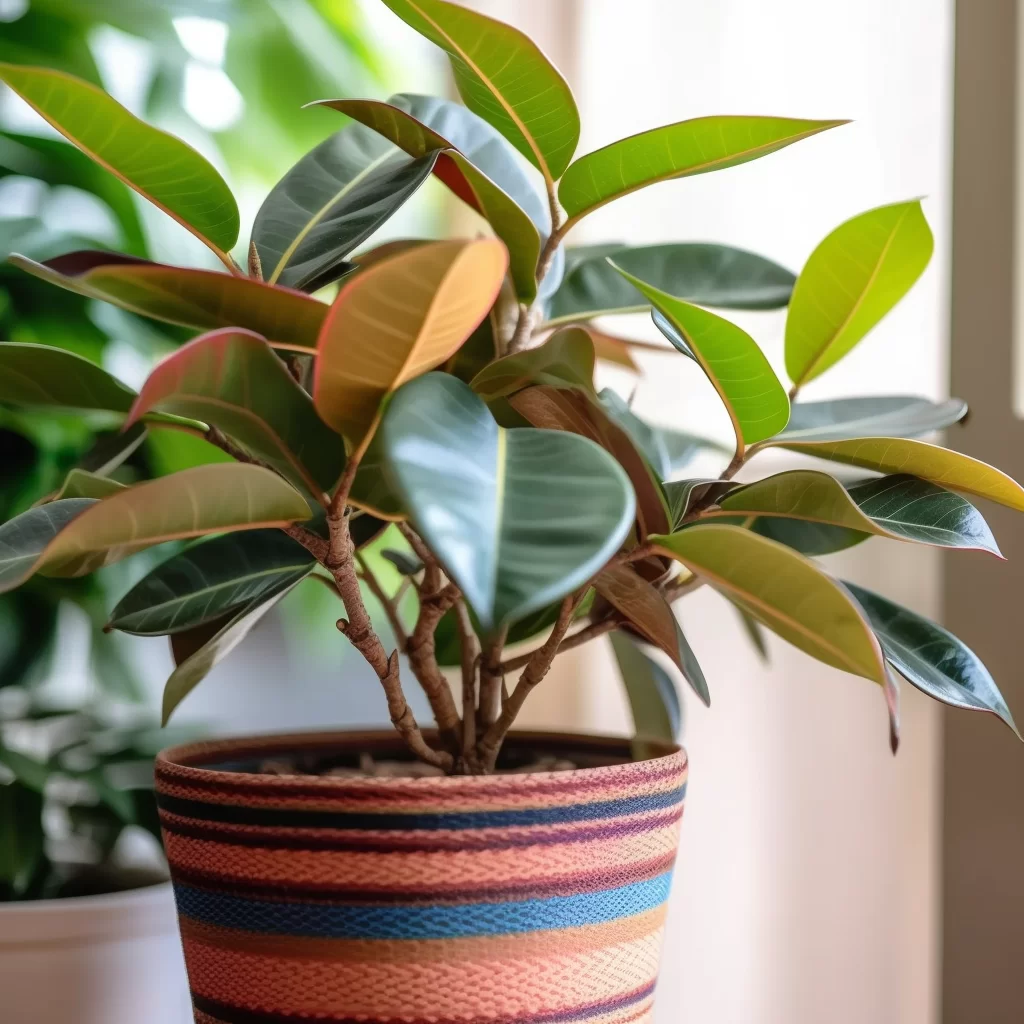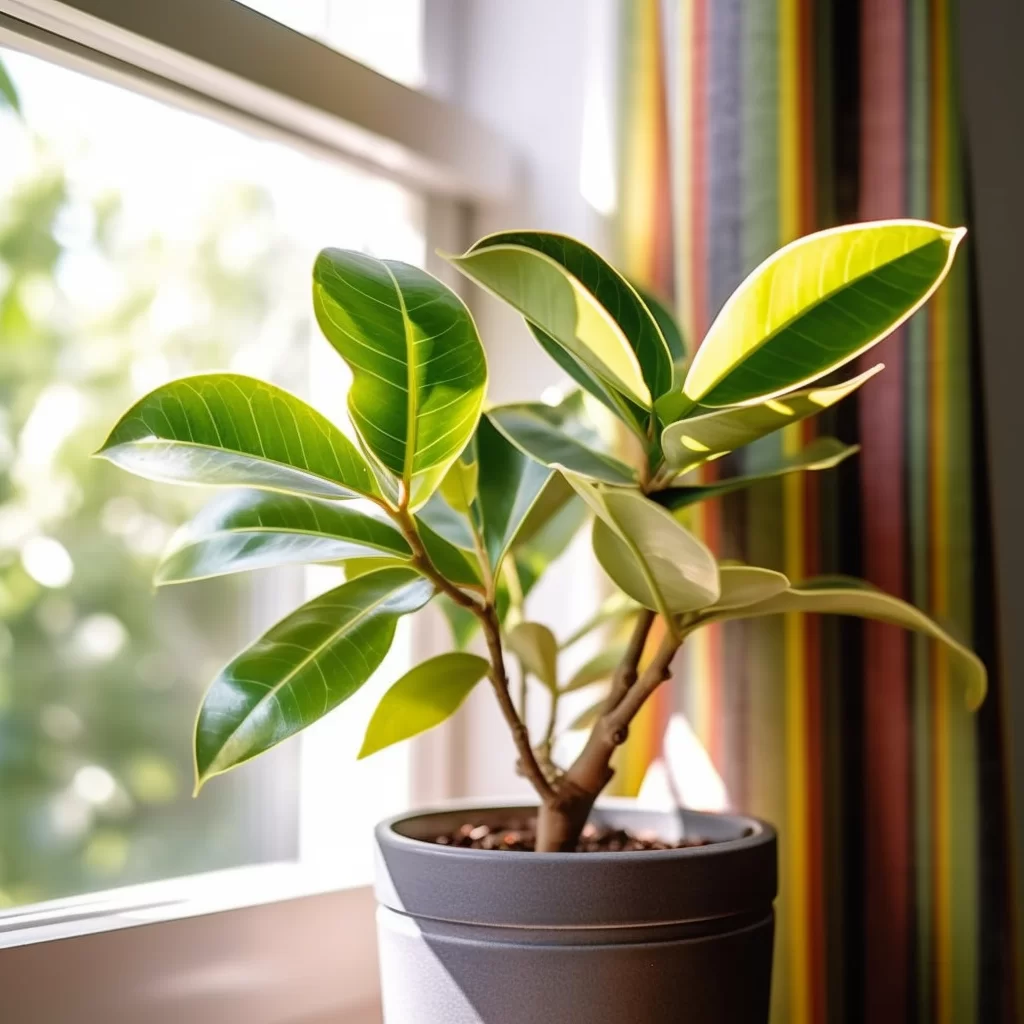Story of Day :
Contents
The Ficus Elastica Rubber Plant: A Complete Guide and Care Tips
The Ficus Elastica, commonly known as the Rubber Plant, is a staple in many houseplant collections.
This tropical plant has thick, shiny leaves that give it a bold and dramatic appearance.
It is easy to care for and can adapt to a variety of environments, making it an ideal choice for both novice and experienced gardeners.
Origins of the Ficus Elastica
The Ficus Elastica is native to Southeast Asia, specifically India and Indonesia.
It was brought to Europe by British explorers in the early 19th century where it gained popularity as a houseplant due to its beautiful foliage.
Care Tips

Lighting Requirements
- The Rubber Plant prefers bright but indirect sunlight.
Direct sunlight can scorch its leaves while too little light can cause leggy growth.
- If you notice your plant leaning towards the light source, rotate it every few weeks to promote even growth.
Watering Needs
- It’s important not to overwater your Rubber Plant as this can lead to root rot.
Allow the top inch of soil to dry out before watering again.
- In winter months when growth slows down, reduce watering frequency but be sure not let soil completely dry out or become waterlogged.
Humidity Requirements:
- Ficus elastica thrives in high humidity (50-60%+).
To increase humidity levels around your plant use humidifier or place pebble tray filled with water near pot for added moisture during drier seasons or dryer climates.
Fertilizer Needs:
- During growing season (spring and summer) feed ficus elastica every two weeks with a balanced houseplant fertilizer.
In winter, cut back to once-monthly feeding.

Common Issues
The Ficus Elastica is generally a hardy plant but can be susceptible to certain issues:
Pests
Aphids, spider mites, and mealybugs are common pests that can infest the Rubber Plant.
They are usually easy to control with insecticidal soap or neem oil spray when caught early.

Diseases
Fungal diseases such as leaf spot and powdery mildew can occur in high humidity conditions or from overwatering.
Trim affected leaves and reduce watering frequency until the plant recovers.
Propagation Techniques
- Ficus Elastica can be propagated through stem cuttings or air layering.
Cuttings:
- To take a cutting, select healthy stem section with several leaves attached.
Cut just below node on stem where leaf attaches.Use rooting hormone dip in water place in soil mix of perlite and peat moss.Keep soil moist until new growth emerges.
Air Layering:
- This method works best for larger plants.Air-layering involves making an incision partially through the trunk of your tree then covering it with spagnum moss & wrapping plastic around it for few weeks so roots grow out of incision point.Once roots have grown about 1 inch long remove plastic wrap & sever new plant from parent before planting into potting mix suitable for ficus elastica rubber tree growth

Conclusion
The Ficus Elastica Rubber Plant is a low-maintenance, yet highly rewarding plant to care for.
With adequate lighting, watering and humidity it can thrive in any indoor environment.
By following the tips and guidelines outlined in this complete guide, you can ensure your Rubber Plant remains healthy and lush for years to come.